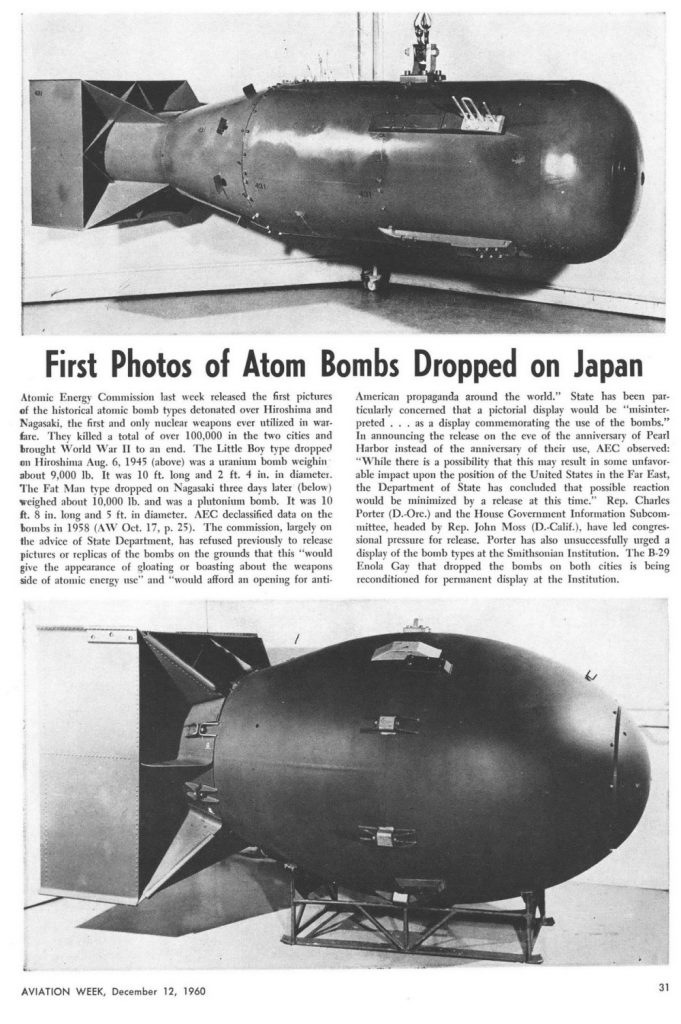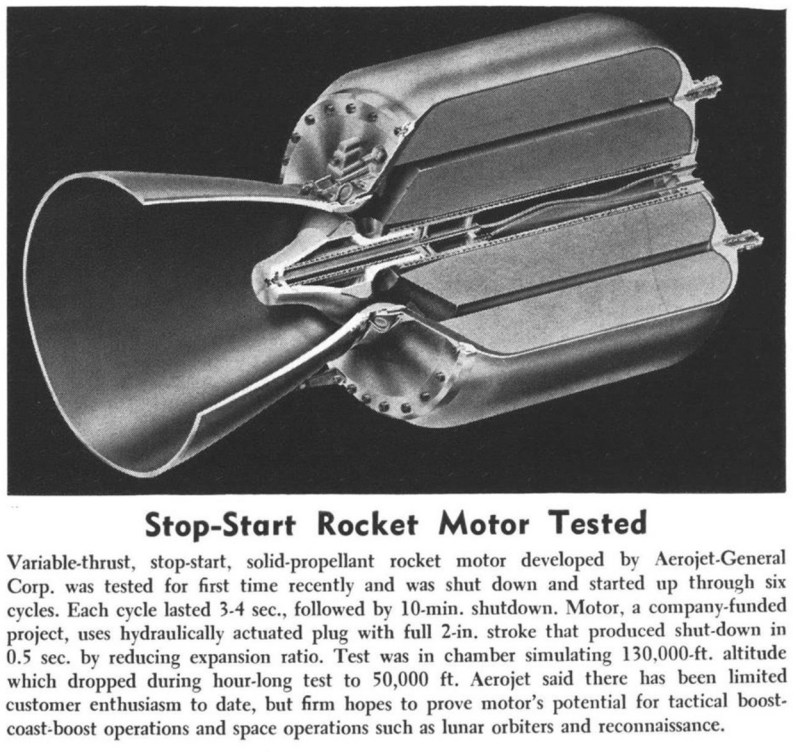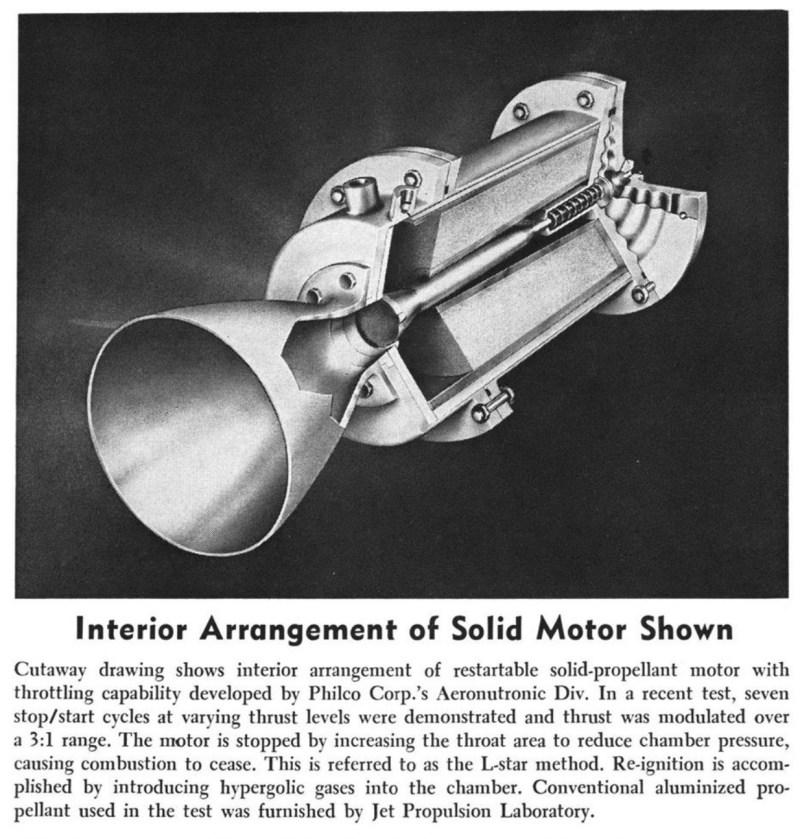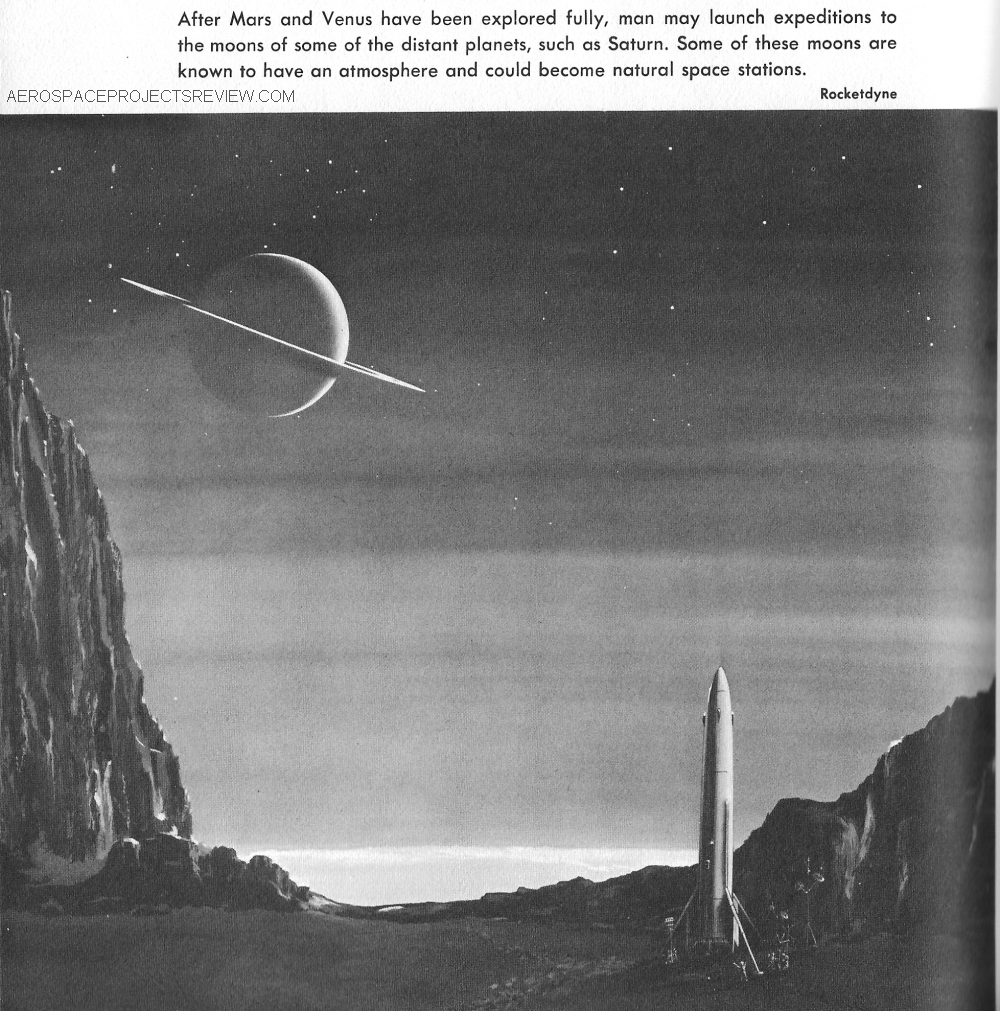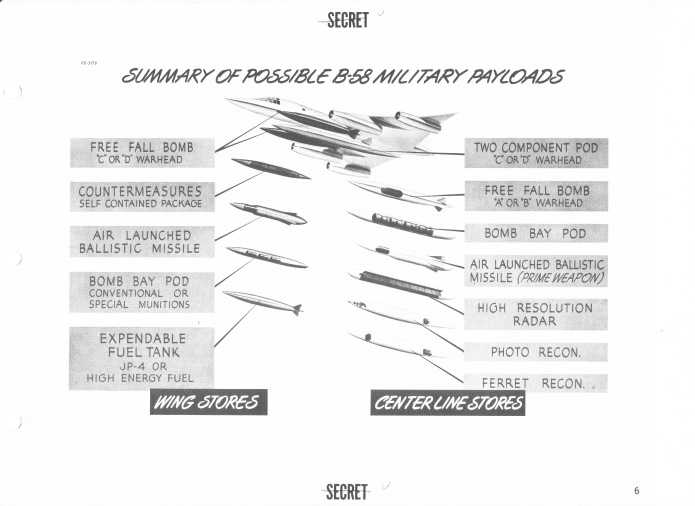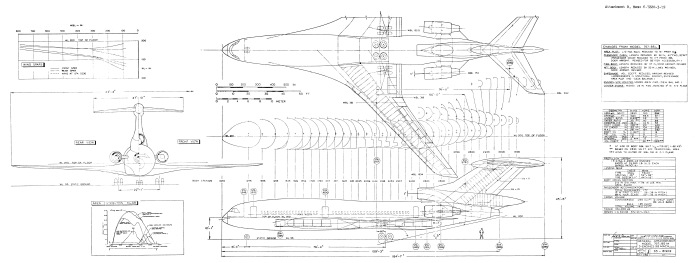As with pretty much all jetliners, the 747 has seen its fuselage stretched (and shortened) to adjust the number of passengers and other payload it can carry. But as stretched as it has been, there were plans for much more extravagant changes. In the early 1970s there were plans in place for not only fuselage stretches by way of inserting lengthening plugs, but also by stretching the upper deck much further aft, turning it into a true double-decker. As the diagram below shows, for shorter routes the passenger count count be bumped up to 1000. keep in ind that this was using 1971-era seating; with modern 21st century passenger-packing technology, who knows haw many human bodies could have been stuffed into these planes, ready to be driven mad by booze, low oxygen, screaming babies and deep vein thrombosis.
When the United States nuked Japan, President Truman was right up front with everybody in stating clearly that the new weapons used were atom bombs. What *didn’t* happen, though, was the publication of photos of the bombs themselves. As a consequence, films from the 40’s and 50’s that depicted the actual atom bombs – such as 1947’s “The Beginning Or The End” – showed rather fanciful bomb designs… because the film-makers had to guess. And surely (I have do doubt the logic went) bombs that are based on such an unconventional process must have unconventional configurations.
It was not until 15 years later that the Little Boy and Fat Man bombs were actually shown to the public in the form of photographs. Now, of course, you can get up close and personal with any of a number of actual bomb casings scattered around in numerous museums, but up until the reveal in late 1960… the average person had no idea what those early nukes looked like. Below is the December 12, 1960 article in Aviation Week showing the first photos; it’s interesting to note that even 60 years ago there ere already stirrings of the ulcerating over sensitivities and feelings that now so dominate any discussion of nuclear technology.
(I thought that I had posted something about this before, but an exhaustive five-second search didn’t pull it up)
In the mid-1960’s the US Air Force became interested in solid rocket motors that you could not only throttle on command but also stop and then start again. Motors like this would, it was assumed, be quite useful for ICBM upper stages, varying the range of the missiles as well as tinkering with the otherwise ballistic – and thus predictable and interceptable – trajectories of the warhead-carrying bus.
The usual accepted wisdom hold that solid rocket motors cannot be stopped once started. This is quite wrong: yo can stop them by flooding them with an inert fluid such as water, but this of course requires a pretty substantial mass of an otherwise useless substance. or you can “blow them out” by suddenly greatly increasing the total throat area. If you can drop the internal pressure by several tens of thousands of PSI per second, the combustion zone will lift off away from the surface of the propellant far enough that the propellant will cease to boil and combust, and the motor will shut down. It can then be restarted by firing off another igniter, similar to the one originally used to get the motor going.
Several US rocket companies responded the the USAF. Shown below are two small Aviation Week articles describing the motors designs put forward. Both operated using an adjustable pintle: basically a plug that *almost* fills the throat. When closed down the throat area is low, and the chamber pressure is high; as the pintle moves away from the throat, the throat area very quickly gets far greater and chamber pressure drops. Done quickly and with full contraction, the combustion should cease; done slowly, with shorter strokes, the throat area will change less drastically and the motor can be throttled up and down. Testing showed that the idea worked as advertised. But the motors had all the performance of a solid rocket with all the cost of a liquid, with all the weight of a forklift added on; it simply wasn’t a practical solution. Storable liquid propellant rockets are more typically used on the upper stages of ICBM for fine trajectory control. Pintle nozzles are, however, often used on solid propellant kinetic kill vehicles.
A piece of Rocketdyne art illustrating something just not quite as possible as they thought at the time: a manned landing on Saturns moon Titan. This dates from prior to (quite likely a decade prior to) 1968 and depicts a terribly 1950’s rocketship standing on its tail in the nicely transparent air of Titan, with Saturn clearly visible in the sky above some modest lower-level atmospheric haze.
This almost certainly does not depict an engineering study, but is simply the result of an aerospace artist at Rocketdyne being let loose to create some PR images.
An early-ish Convair illustration of the potential weapons and other payloads to be carried by the B-58 bomber, both in the centerline pod and under the wing roots. Note not only ballistic missiles but also several recon options, and a “bomb bay pod” giving the aircraft a payload of several gravity bombs, presumably nuclear.
I have uploaded the full resolution scan of the illustrations to the 2019-04 APR Extras Dropbox folder, available to $4 and up subscribers to the APR Monthly Historical Documents Program.
A Boeing diagram of the Model 767-85M, a pre-767 jetliner concept from 1971 designed to cruise at Mach 0.98. In order to achieve that, the design was massively aerodynamically optimized for transonic efficiency… with “wasp-waiting” taken to something of an extreme. The aircraft would have been fuel efficient at high (but still subsonic) speed, but would have been a nightmare to manufacture.
I’ve made the full-rez scan of this large format diagram available to above-$10-subscribers to the APR Monthly Historical Documents Program/Patreon.
If this sort of thing is of interest, consider subscribing. Even a buck a month will help out; but the more you subscribe for, the more you get… and the more you help me get from eBay and save for the ages.

